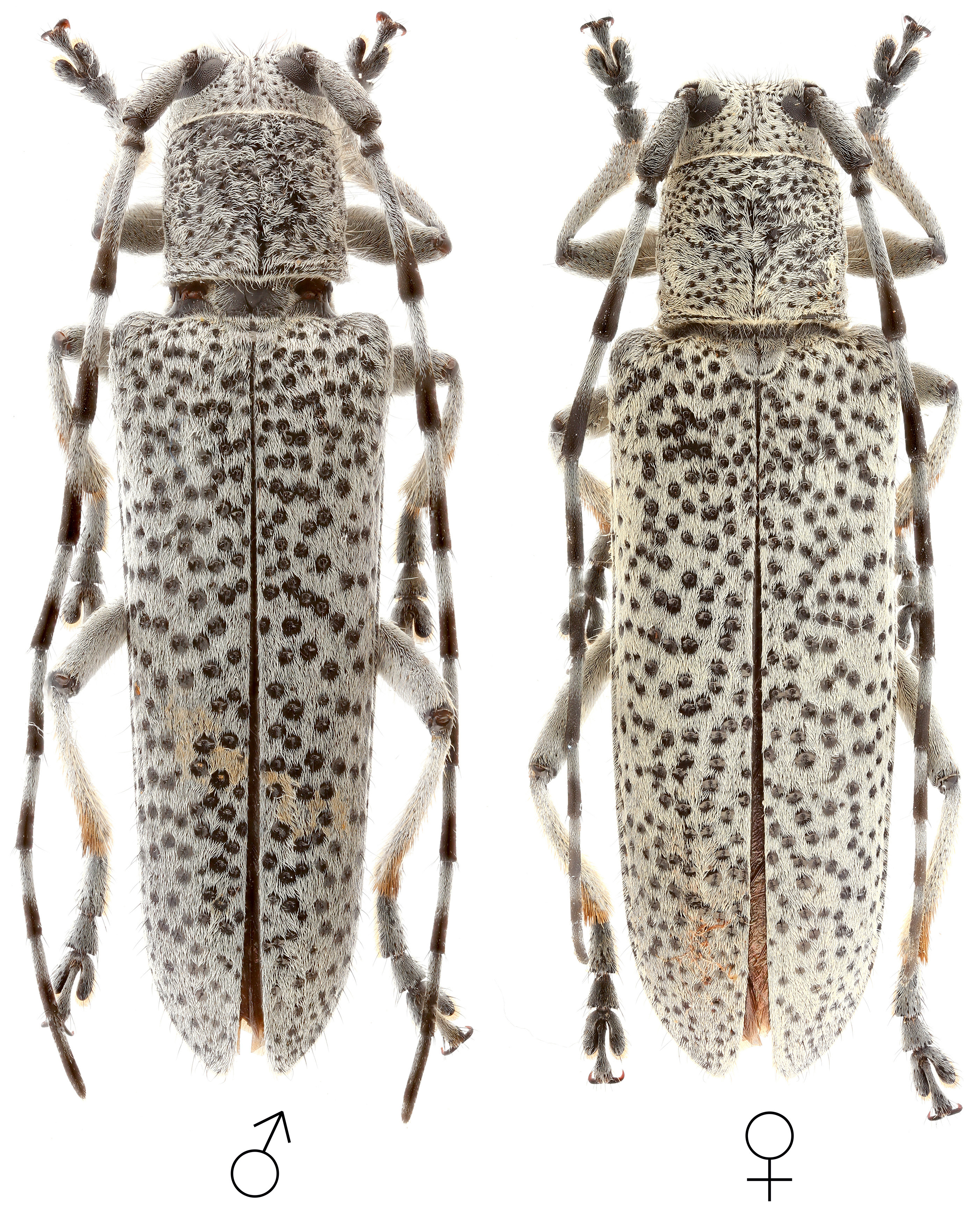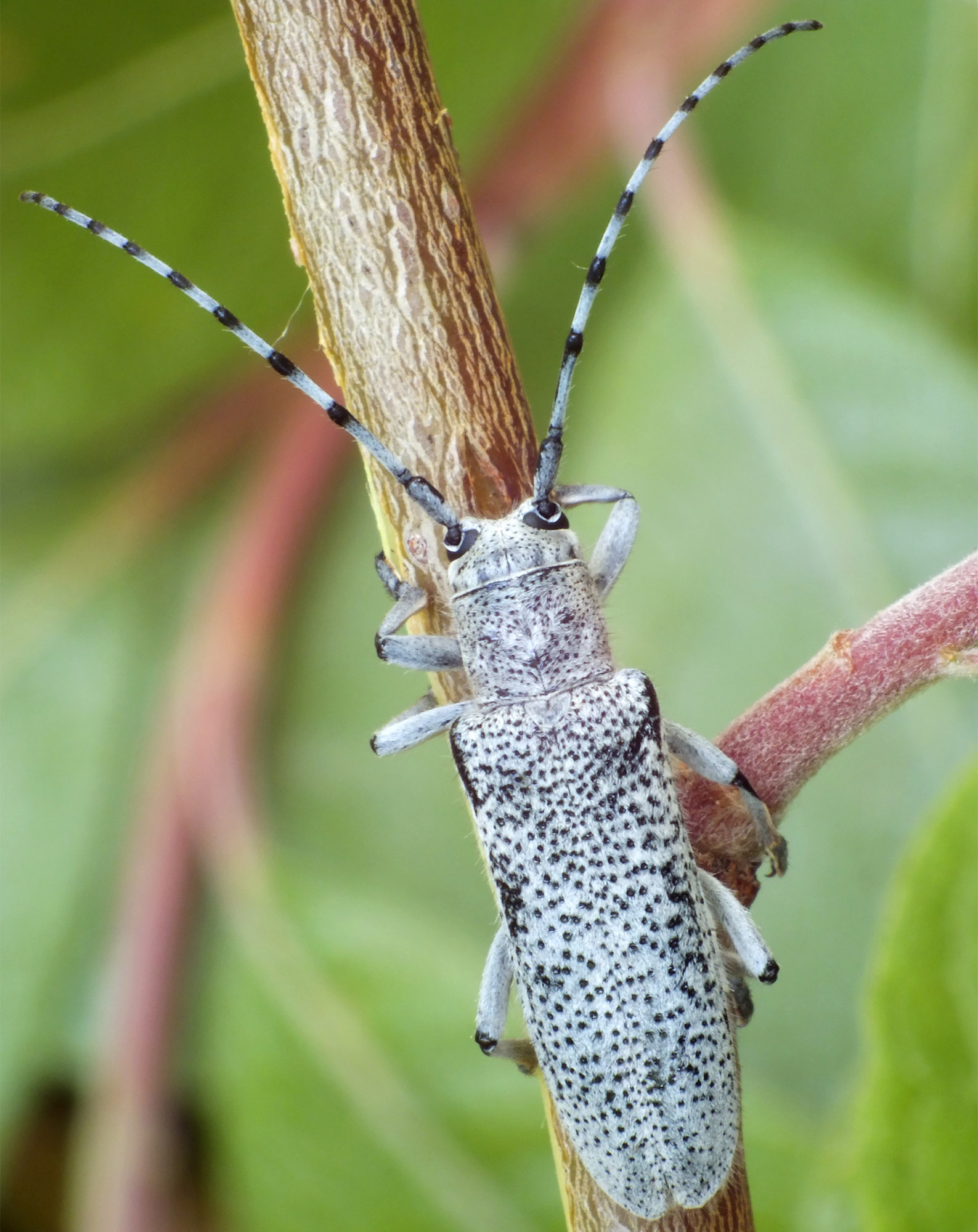
[Photo © Denis G. Kasatkin]
|
Saperda similis, a widely distributed Palearctic species occuring from West Europe to Mongolia, has been described from Insbruck environs (Austria) by Johann Nepomuk Laicharting in 1784 [▽].
S. similis larvae develop in living tissues of goat willow (Salix caprea).
Attacked trees can be easily recognised by an amount of frass expelled by later larval instars when creating pupal cells at the beginning of May (Central Europe) [❖].
Adults, active from late May to August, can be found on the host trees.
| Body length: | 12 - 25 mm |
| Life cycle: | 2 - 3 years |
| Adults in: | June - August |
| Host plant: | Salix spp., in Europe monophagous on goat willow (Salix caprea) |
| Distribution: | Europe (Albania, Austria, Belarus, Belgium, Bosnia and Herzegovina, Bulgaria, Croatia, Czechia, Estonia, Finland,
France, Germany, Greece, Hungary, Italy, Lithuania, Norway, Poland, Romania, Russia, Sicily, Slovakia, Slovenia, Spain, Sweden, Switzerland, Ukraine),
China (Xinjiang), Mongolia, Kyrgyzstan, Kazakhstan, Tajikistan, Uzbekistan |
The depicted mounted beetles were collected in Fergana Range 17 km SE Otbay (Отбай) village (N41°39′ E73°03′;
Toktogul district, Jalal-Abad Region, Kyrgyzstan) on June 11-15, 2017. The living beetle was collected in Librazhd environs (Elbasan county, Eastern Albania) in June 2014.
The presented specimens represent the white pubescence form (Saperda similis var. albopubescens Pic, 1925), which is characteristic for Central-East Asia but rather rare in Europe.
Collected by Andrey Shapovalov and Tamás Németh
[▽]
Laicharting J.N.:
Verzeichniss und Beschreibung der Tyrolen-Insecten.
Zürich, Johann Caspar Füessly, 2 (1): v-xiv + 176pp, 1784.
[download  ] ]
[❖]
Sláma M.E.F.:
Tesaříkovití – Cerambycidae České republiky a Slovenské republiky / Cerambycidae of the Czech Republic and Slovak Republic.
Milan Sláma private printing, Krhanice, 383pp [page 318-319], 1998 [ISBN: 80-238-2627-1].
[download  ] ]
|



